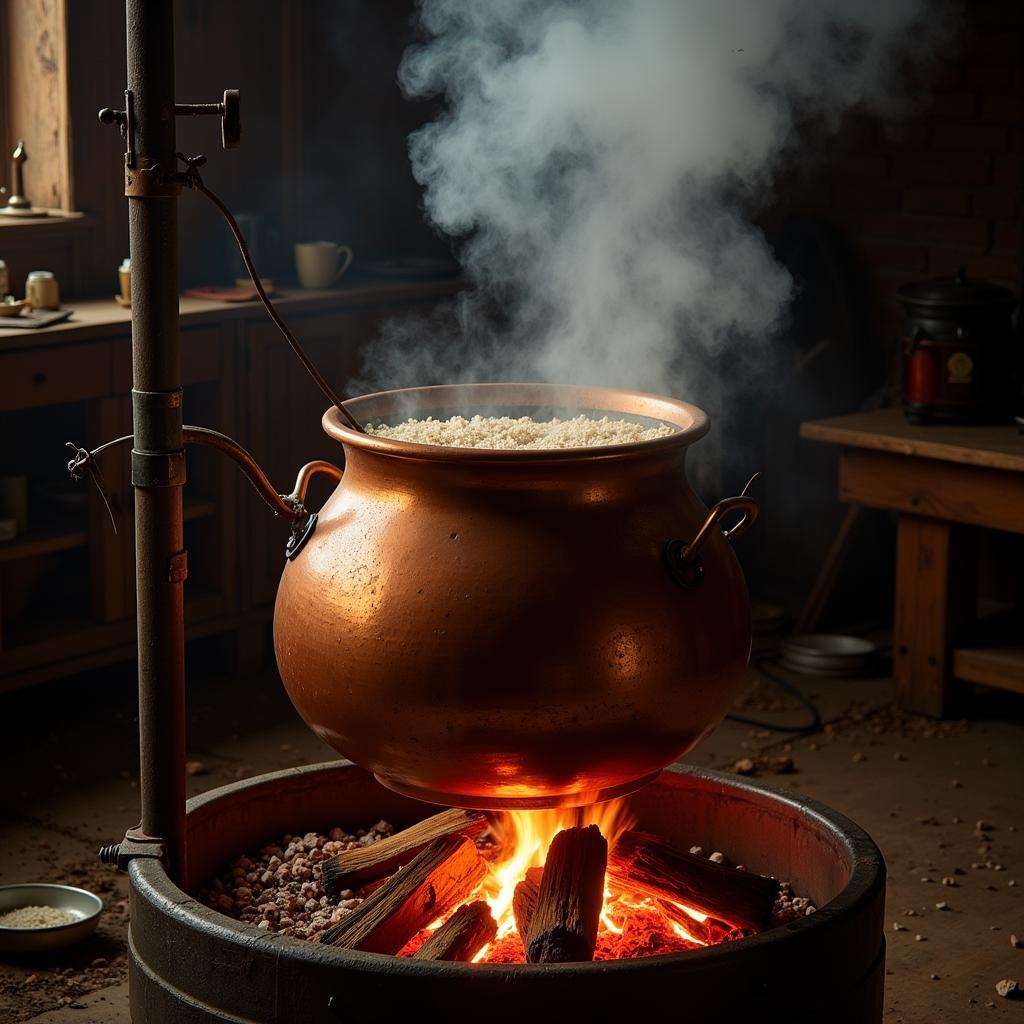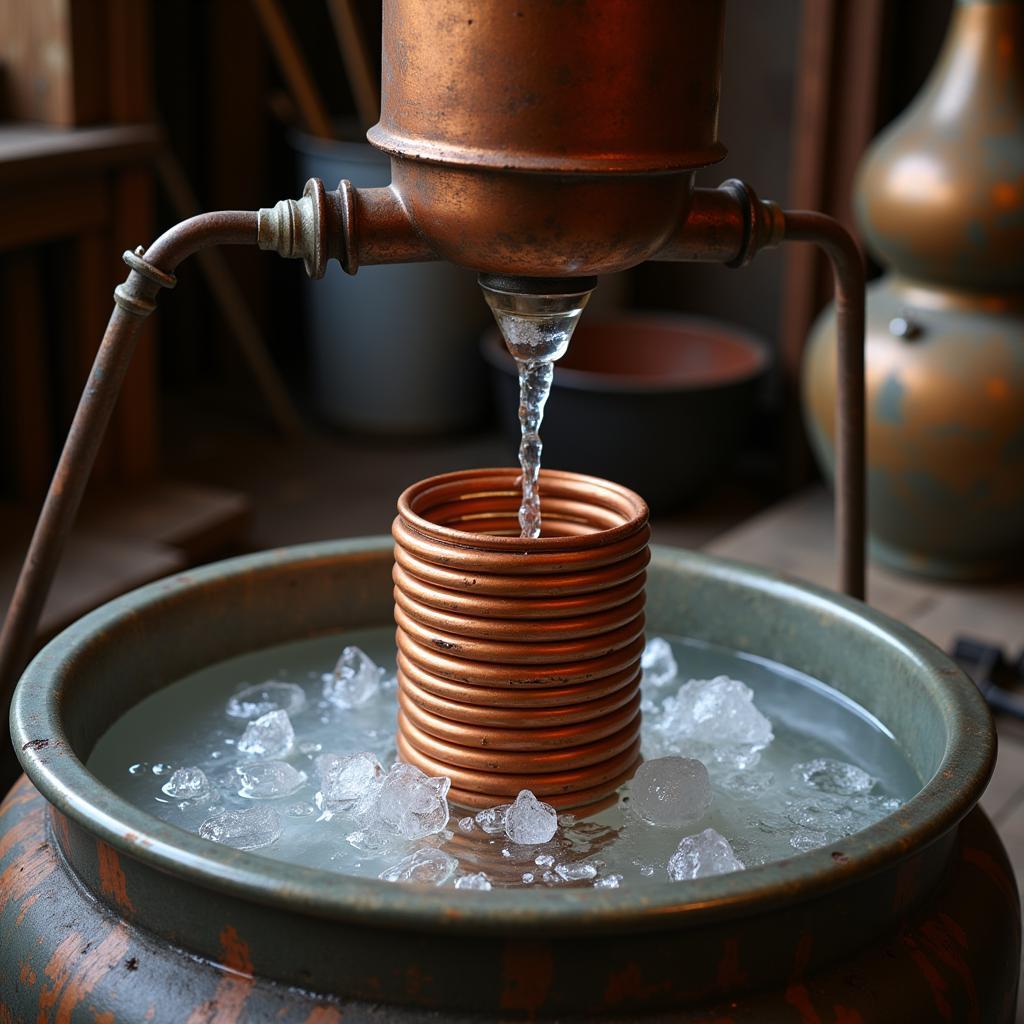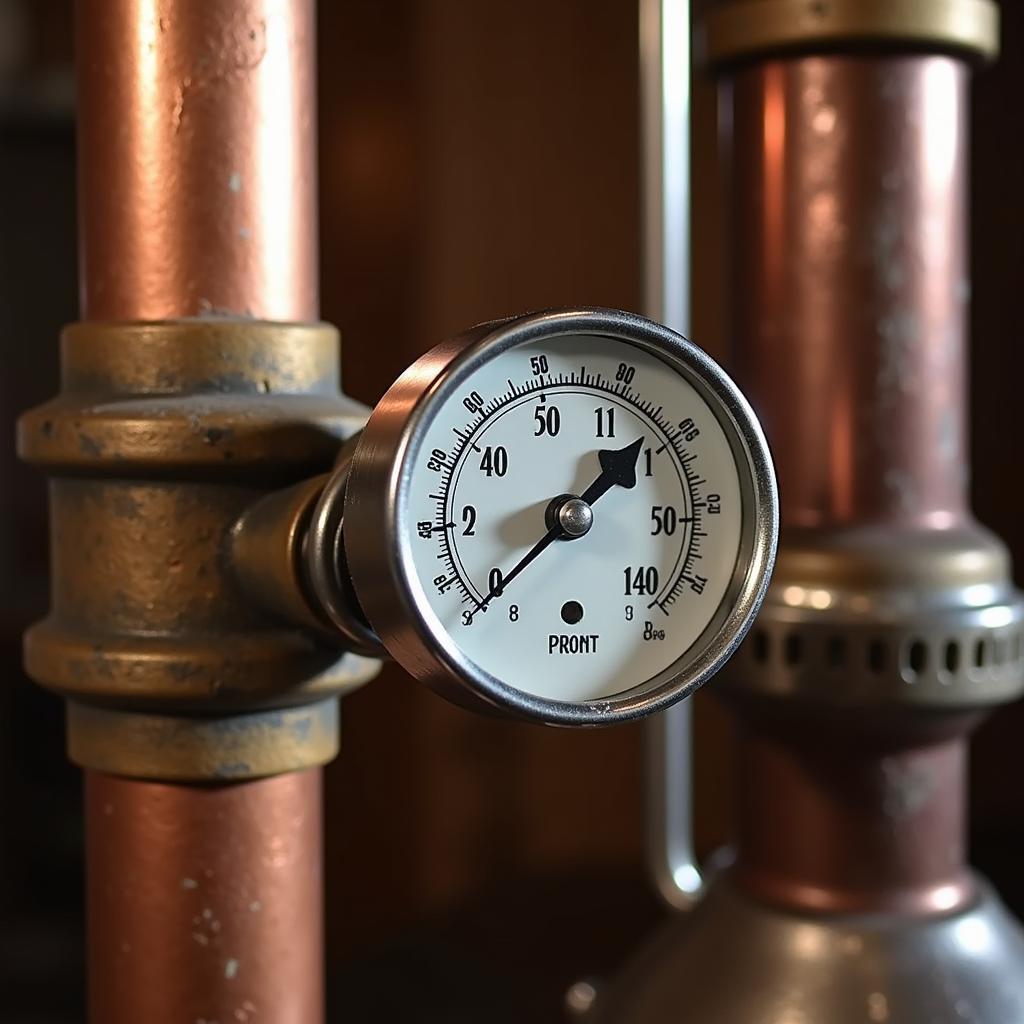Understanding the Parts of a Moonshine Still
October 30, 2024Moonshine stills, shrouded in mystery and folklore, are fascinating pieces of equipment. Understanding the parts of a moonshine still is crucial for anyone interested in the process, whether for historical appreciation or practical application. This article breaks down the key components and their functions.
Exploring the Core Components of a Moonshine Still
A moonshine still essentially separates alcohol from fermented mixtures based on boiling points. This separation requires several interconnected parts working in harmony. Let’s delve into the heart of the still.
The Pot or Boiler: The Heart of the Operation
The pot, often referred to as the boiler, is where the fermented mixture, commonly called the “mash,” is heated. This large container is the foundation of the entire process. The heat applied to the mash causes the alcohol to vaporize, the first step in the separation process. Choosing the right pot material is vital, impacting both flavor and safety. Copper is traditionally preferred for its heat conductivity and ability to remove sulfur compounds.
 Copper Pot in a Moonshine Still
Copper Pot in a Moonshine Still
The Column: Guiding the Vapor Upwards
The column rises above the pot and channels the alcohol vapor upwards. The height and design of the column significantly influence the final product. Taller columns generally produce a purer spirit. There are several types of columns, including reflux and pot stills, each with unique characteristics impacting the final flavor profile.
The Condenser: Cooling and Condensing the Vapor
The condenser is where the magic happens. Here, the hot alcohol vapor is cooled and transformed back into liquid alcohol. This typically involves a coil of copper tubing surrounded by cold water. The design of the condenser is critical for efficient cooling. A well-designed condenser maximizes alcohol recovery.
 Moonshine Still Condenser Cooling Process
Moonshine Still Condenser Cooling Process
The Collection Vessel: Capturing the Liquid Gold
Finally, the condensed liquid, now moonshine, drips into the collection vessel. This is the culmination of the entire distillation process. The collection vessel should be clean and sterile to ensure the purity of the final product.
Understanding the Supporting Parts of a Moonshine Still
Beyond the core components, several supporting parts play essential roles in the operation of a moonshine still.
The Heat Source: Fueling the Distillation
The heat source is crucial for vaporizing the alcohol. Traditionally, wood fires were used, lending a distinct smoky flavor to the moonshine. Modern stills often utilize electric or propane heat sources for better temperature control. Careful temperature management is critical for a successful distillation.
Thermometers: Monitoring the Temperature
Precise temperature control is essential for separating the alcohol from other components in the mash. Thermometers, strategically placed on the still, allow for accurate monitoring of the temperature throughout the process. Understanding temperature readings is key to achieving the desired alcohol concentration and purity.
 Monitoring Temperature with a Thermometer on a Moonshine Still
Monitoring Temperature with a Thermometer on a Moonshine Still
Conclusion
Understanding the parts of a moonshine still is fundamental to appreciating the art and science behind this time-honored practice. From the pot where the journey begins to the collection vessel where the final product is gathered, each component plays a critical role. While moonshine still ownership and operation are subject to legal regulations, learning about its components offers a fascinating glimpse into the world of distillation and the rich history of spirits.
FAQ
- What is the most important part of a moonshine still? The pot or boiler is arguably the most important, as it’s where the initial heating and vaporization occur.
- Can I use any type of metal for the still? While different metals can be used, copper is traditionally preferred for its heat conductivity and ability to remove sulfur compounds.
- How does the condenser work? The condenser cools the alcohol vapor back into liquid form.
- Why is temperature control important? Precise temperature control ensures efficient separation of alcohol from other substances.
- What is the purpose of the column? The column channels the alcohol vapor upwards and influences the purity of the final product.
- How do I choose the right heat source? The heat source depends on factors like desired temperature control and flavor profile.
- What is the role of the collection vessel? The collection vessel holds the final condensed liquid, the moonshine.
Need support? Contact us 24/7 at Phone Number: 0963418788, Email: [email protected] or visit us at 2M4H+PMH, Phường Nghĩa Thành, Gia Nghĩa, Đắk Nông, Vietnam.